If we build it, they will board
July 22, 2010
For decades, the conventional wisdom was that L.A. drivers would never loosen their grip on their steering wheels to embrace public transportation, no matter how infuriating the traffic.
But this summer, as we celebrate the 20th anniversary of the Blue Line light rail between downtown L.A. and Long Beach, we find that the people of Los Angeles County have proven the pundits wrong time and time again. They’re not just riding; they’ve put real money behind the effort to transform our region’s transportation system.
More than a billion boardings have taken place since the Blue Line inaugurated our Metro Rail system two decades ago—dramatic evidence of how our region is beginning to transform itself from a capital of car dominance in the last century into a multifaceted transportation smorgasbord in this one.
This cycle of growth underscores one of the most important lessons of the last 20 years: that the more you build the system, the more of a system you build.
In other words, what we’re creating is more than the sum of its parts. Our transportation system becomes exponentially more useful and popular with the addition of each new element. And small beginnings can grow into big successes. When the Metro Red Line first opened in 1993, L.A.’s first modern subway may have underwhelmed some with its quick, short ride from downtown to MacArthur Park. Now it’ll take you to Hollywood and Vine, Universal City and beyond.
Then there’s the Orange Line, the popular rapid transit busway that runs from Warner Center to North Hollywood and now is being extended northward to Chatsworth. In the line’s first year of operation, more than 30% of the riders who flocked to the line turned out to be newcomers to our public transportation system.
And each alternative we offer adds up to real hours restored to the lives of real people, like the woman who came up to me after the Orange Line opened and emotionally expressed her thanks for the public transportation options that now let her get from her home in the Valley to her job in Long Beach in far less time.
These new options gave her back an hour and a half each day—time she can now spend with her kids.
To make that kind of progress a reality for more people, our region found an important ally in 2008: the ballot box of Los Angeles County.
Even as the economic recession was crashing in on us, voters had the wisdom to overwhelmingly approve Measure R. That provided a half-cent sales tax revenue stream for 30 years to fund transportation projects that are reshaping transportation as we know it in Los Angeles.
Talk about a game changer.
When Phase 2 of the Expo Line project breaks ground next year, the $1.5 billion project will be bankrolled largely by Measure R funds. Slated for completion in 2015, the entire light rail line, paralleling the Santa Monica Freeway, will connect riders from downtown to Exposition Park and USC to Culver City and Santa Monica. It will stand as the first public mass transit project to hit the west side of Los Angeles since the Red Car system was dismantled in the 1950s.
Thanks to Measure R, we are solidly on the right track—with projects across the county that will improve the quality of life for everyone, wherever they live or work.
And now we have the opportunity to really put the pedal to the metal, so to speak, on many of those projects. Under the 30/10 initiative proposed by Mayor Antonio Villaraigosa and backed by Metro’s Board of Directors, of which I am a member, a dozen key projects would be completed in 10 years—instead of 30—by taking out low-interest federal loans to be repaid with Measure R revenue.
The 30/10 plan is not a sure thing, but it’s the right thing—not just for the sake of commuters but for the sake of our Southern California economy, which badly needs the jobs these transit projects would provide.
This accelerated transit building plan is not a magic bullet to solve all of our traffic congestion woes. Realistically, those will be with us as long as there are too many cars for our region’s finite freeway space.
But if we can get the federal assistance we need to make 30/10 a reality, we will be able much more quickly to offer people an ever-increasing set of transit alternatives, including a Green Line that extends to LAX, a regional connector downtown, a Gold Line that runs to Azusa and points east, a subway to Westwood by the end of the decade, and perhaps even a light rail that runs along the 405 Freeway to the San Fernando Valley.
Those projects are part of a new Los Angeles transportation paradigm–one in which trains, buses, bicycles and pedestrians all are important players as we find alternatives to the congested roadways that have eroded our quality of life and limited our access to jobs and cultural attractions.
So when I attend Metro’s official salute to the Blue Line’s 20th anniversary on Friday morning, I will honor all that we’ve accomplished, reflect on all we’ve learned and get ready for all that comes next.
And for our next 20 years, how’s this for a motto: Full speed ahead.
————————–
For a striking visual depiction of how far we’ve come since the Blue Line made its inaugural voyage, check out this interactive timeline map from Metro.
Posted 7/22/10
New outside digs at museum
April 22, 2010
The Natural History Museum is, in its words, getting “a new front yard”—3.5 acres of open-air habitats and exhibits designed to attract local wildlife and connect visitors with Southern California’s unique outdoor experiences.
“We saw a chance to put nature back in natural history,” museum president and director Dr. Jane Pisano said during a media event to announce the ambitious $30-million project, scheduled to open in the Summer of 2011.
Tentatively called “North Campus,” the outdoor area will increase the museum’s exhibit space by 50% through the creation of 11 “wilderness” areas with such names as Pollinator Garden, Living Wall, Urban Edge, Shadow Garden and Get Dirty Zone.
The goal is to replicate a series of distinct natural environments that draw birds, butterflies, lizards and other wildlife while becoming educational laboratories for visitors of all ages. (For a detailed list of North Campus features, click here).
“We can teach people lessons they can easily take to their backyards or schoolyards,” Pisano said in an interview following the media presentation.
In addition to the outdoor exhibits, a 140-foot bridge—inspired by a whale skeleton exhibited inside the facility—will span overhead, allowing visitors to walk from the street directly to the entrance of the county-run museum off Exposition Boulevard. A stop will also be built in front of the museum for the new light-rail Expo Line, which is now under construction.
Funding for the project includes $10 million from L.A. County to build a two-story garage that will free up more space for the habitats.
North Campus is the latest piece of the Natural History Museum’s ongoing rebuilding and transformation project leading up to its 2013 Centennial. Called “NHM Next,” the initiative started with the dramatic restoration of the museum’s 1913 building, completed last year.
The Beaux Arts building was the first dedicated museum in L.A., so its restoration included a state of the art seismic retrofit to strengthen the un-reinforced brick walls.
Construction crews also restored the building’s iconic dome, covered with a stunning display of more than a million yellow and green ceramic tiles. Meanwhile, artists recreated the building’s gargoyles and topped the east wing with a new 6-foot eagle to replace the original bird destroyed in a 1920s earthquake. The grandson of the creator of a stained-glass skylight oversaw the restoration of the multi-hued piece.
In July, the building’s first new permanent exhibit is set to open, a ground-breaking look at 65-million years of the “Age of Mammals,” the first permanent exhibit to link geology and climate change over the entire sweep of mammalian history.
Scheduled to open in 2011 will be “Dinosaur Mysteries: Past & Present,” a mega-exhibit exploring how dinosaurs lived and why they died. The stars of that show will be the world’s only grouping of a baby, child and adult T. rex.
Come December, 2012, just before the museum’s centennial celebration, a third major exhibit will debut—“Under the Sun: Los Angeles, California and the World.” It will chart local cultural and natural history with hundreds of artifacts and artworks.
While waiting for the new exhibits, museum goers have had plenty of offerings in the museum’s 1920s buildings that have remained open, including the beloved dioramas of wild animal habitats of Africa and North America, and a “Thomas the T. rex” exhibit showing the young adult dinosaur excavated recently in Montana. To plan a visit, check out the museum’s updated website.
This ad’s for you, if Metro shifts gears
March 17, 2010
It’s been 13 years since they dimmed the lights and sounded last call for beer and wine advertising on local buses and trains.
Now those ads could be on tap again.
A proposal to bring back such advertising goes before a Metropolitan Transportation Authority committee this week. The idea has surfaced as Metro faces a $181 million deficit—and likely staff cuts and service reductions–in the coming fiscal year that begins in July.
CBS Outdoor, Metro’s advertising vendor, said it would split the revenue generated by the new beer and wine advertising with the agency, generating about $500,000 a year for Metro, according to the report to be considered by the Executive Management and Audit Committee on Thursday. That amount would be on top of Metro’s revenue from other CBS Outdoor advertising, which is set at a flat fee of $27.9 million in the coming fiscal year.
Ads for tobacco and other alcoholic beverages would remain off-limits.
Warren Morse, Metro’s deputy executive officer for communications, said the idea of reinstating beer and wine advertising originated with CBS Outdoor and was being presented to the committee as one possible revenue-generating option.
“We didn’t bring this up to be controversial,” he said. Morse said that the cities of Los Angeles, West Hollywood and Inglewood allow beer and wine advertising on bus shelters in their areas, which account for 85% of the shelters in the county.
Metro banned tobacco and alcohol advertising on its vehicles in April, 1997, on a motion by then-Supervisor Yvonne Brathwaite Burke, who was also on the Metro board of directors at the time. (The current policy is here. )
Burke, who retired in 2008, said in an interview that she had introduced the motion as a matter of good health policy. She said public transportation passengers are a captive audience, and alcoholics, in particular, could be placed in a difficult situation if they are unable to avoid seeing such ads.
“You have an audience that is almost kidnapped,” Burke said. “I just wonder how much money is going to be generated to make it worth it.”
Metro riders interviewed this week seemed divided on whether beer and wine ads should be allowed to share their afternoon commute.
“I don’t want to see it,” said Red Line subway passenger Joe Barry. “There is already enough exposure. I don’t see why it has to be featured down here as well.”
“I don’t need to have it in my face every minute of the day,” added Paul Donaldson, another Red Line rider. “I can get that enough from TV.”
But Avis Jackson, riding the Purple Line, said, “It doesn’t matter because the advertising is everywhere else and is so overexposed.”
Added Michael Paz, waiting to board the Purple Line: “It’s fine with me if it creates some money for the city.”
CBS Outdoor senior vice president Rich Ament said the change makes financial sense. He said beer and wine advertising represents a “serious opportunity” for Metro to receive revenue from what is “essentially a recession-proof product.”
“Beer and wine advertising is everywhere,” Ament said. “The only place it doesn’t exist is on the (L.A.) transit system… It exists pretty much everywhere else.”
New York’s Metropolitan Transportation Authority is among the big city transit systems that allow such advertising. But San Francisco’s does not.
“Tobacco and alcohol advertising are seen as not appropriate on public transportation vehicles that are publicly funded,” said Murray Bond, deputy director for communications at San Francisco’s Municipal Transportation Agency.
Posted 3/17/10
MTA board looks at Regional Connector alternative
February 18, 2010
An alternative design for the Regional Connector Transit Corridor project will come before the Metropolitan Transportation Authority Board at its meeting next week.
The Regional Connector, which is receiving Measure R funding, will help Gold Line, Blue Line and eventually Expo Line commuters make seamless connections across the region.
The design alternative, which would go underground in Little Tokyo, is being recommended by Metro staff to be included for study as part of the project’s environmental review process.
The MTA board meets at 9:30 a.m. on Thursday, Feb. 25.
Posted 2-18-10
Seeking a better two-wheel vision of L.A.
February 11, 2010
 If you bicycle in Los Angeles, the Metropolitan Transportation Authority needs you.
If you bicycle in Los Angeles, the Metropolitan Transportation Authority needs you.
Specifically, they need you to show up for their first Bicycle Roundtable on Friday, Feb. 19, from 2 p.m. to 4 p.m.
The idea is to “initiate a dialogue and identify issues of importance to cyclists in Los Angeles County that will help create a vision for enhancing Metro’s current bicycle program.”
The meeting comes as bicycles occupy an increasingly important place on the regional transportation agenda, with the city and county of L.A. both creating new master plans for cycling. Bikeways are in the news, too, including a federally-funded bikeway being planned to run from downtown to Santa Monica, adjacent to the Expo Line currently being built.
Doug Failing, former head of Caltrans Bicycle Advisory Committee and now Metro’s New Executive Director of Highway Programs and Interim Chief Planning Officer, will get things started at the roundtable.
There’s bicycle parking at One Gateway Plaza (“between the fish tank/customer service center and Metro elevators”) and lots of public transportation options for getting there (naturally) at the link above.
A milestone for Expo—and the Westside
February 4, 2010
The Expo Line is ready to roll west.
Directors of the Exposition Metro Line Construction Authority on Thursday evening approved the final environmental impact report for Phase 2 of the light rail project after years of study and months of community input and debate.
The vote clears the way for selection of a contractor to design and build the $1.5 billion project, which would complete the Culver City- to-Santa Monica segment of the 15.2-mile line.
Construction on Phase 1, which parallels the heavily-congested Santa Monica Freeway and runs from downtown to Culver City, is now underway and aiming for completion in 2011. Some work on Phase 2 could begin as early as this year, with the project scheduled to wrap up in 2015. By 2030, the entire line is projected to carry 64,000 riders a day.
Proponents of the line say it will be a boon for anyone who drives to, or from, the Westside, especially those who must battle traffic on the 10 Freeway. For tourists, students and the region as a whole, the completed light rail line will provide access to an array of cultural and community venues in downtown and beyond, including Exposition Park/USC, the Crenshaw District and the beach.
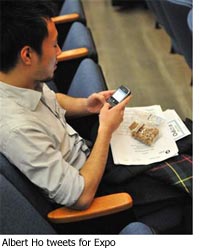 The vote attracted considerable attention, with hundreds of people on all sides of the issue attending the meeting in the Hall of Administration. In addition, Expo was a hot topic for social networking, with one blogger—Damien Newton of Streetsblog Los Angeles—delivering play-by-play reports on the meeting via Twitter. Albert Ho, an Expo community outreach consultant, also tweeted throughout the proceedings.
The vote attracted considerable attention, with hundreds of people on all sides of the issue attending the meeting in the Hall of Administration. In addition, Expo was a hot topic for social networking, with one blogger—Damien Newton of Streetsblog Los Angeles—delivering play-by-play reports on the meeting via Twitter. Albert Ho, an Expo community outreach consultant, also tweeted throughout the proceedings.
Opponents, many of them with a group called Neighbors for Smart Rail, said they were not against a rail system per se but wanted it to run underground for reasons of safety and quality of life. That option has been ruled out, in part because of the cost.
Those speaking in favor of the plan—an array of homeowners, business people, educators, college students and political leaders from across the region—offered testimony that focused on the need to solve the area’s traffic overload, bring workers to Westside jobs and deliver on the will of the voters who approved Measure R, which will largely finance the rail line.
After nearly four hours of public testimony, the Expo board members had their say.
“This part of town, this part of the county, has waited a long time for this. The time for action has come,” said Zev Yaroslavsky, Expo board member and 3rd District County Supervisor. (Read his blog on the Expo Line project here.)
The Expo Line—together with another project now in the planning stages, the Westside Subway extension—will represent a transit breakthrough for a jobs-rich area that has had to rely on buses for its mass transportation needs as a region-wide rail system has grown up around it in recent decades.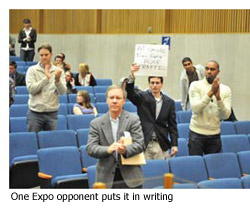
When all is completed, the Expo Line will make it possible to travel from downtown Los Angeles to Culver City in less than 30 minutes, and to ride the entire length of the line in 46 minutes.
“It’s a big step forward for the region,” said Expo board member and Culver City Councilmember Scott Malsin.
“With 200,000 cars coming [into Santa Monica] every day, every one of my streets is gridlocked. I’ve had it up to here with gridlock,” added board member Bill Rosendahl, acting as alternate for his L.A. City Council colleague Jan Perry.
Yaroslavsky, Malsin and Rosendahl joined L.A. City Councilmembers Herb Wesson, Jr. and Bernard C. Parks and Santa Monica City Councilmember Gleam Davis in approving the final environmental impact report. Dan Rosenfeld, acting as alternate for County Supervisor Mark Ridley-Thomas, abstained.
Ridley-Thomas, before leaving the meeting early, had offered a motion that would have delayed a decision on the report until the Metro CEO could finish a review of the agency’s grade crossing policy. That motion was defeated.
The route approved by Expo directors includes seven stations: National/Palms, Expo/Westwood, Expo/Sepulveda, Expo/Bundy, Olympic/26th Street, Colorado/17th Street and Colorado/4th Street.
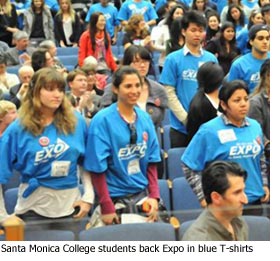 In preparing the final environmental review, the Expo staff received thousands of public comments on the project. Most were supportive but some raised key questions about traffic, grade crossings, parking, noise and vibration, the proximity to schools and the location of the project’s maintenance facility.
In preparing the final environmental review, the Expo staff received thousands of public comments on the project. Most were supportive but some raised key questions about traffic, grade crossings, parking, noise and vibration, the proximity to schools and the location of the project’s maintenance facility.
In addressing those concerns, Expo staff made a number of modifications in the environmental plan presented to the board of directors.
The “locally preferred alternative” plan recommended new elevated grade separations at a number of intersections: Venice Boulevard, Bundy, Centinela, Pico-Gateway, Cloverfield/Olympic and Sawtelle.
More changes came from the Expo board Thursday. On a motion by Yaroslavsky, the directors included an option to build an aerial station at Expo/Sepulveda if funding could be found. The plan also calls for a 170-space parking lot at the Westwood Boulevard station. But the board approved a motion by Yaroslavsky to keep open the possibility of building the station without a parking lot. That could allow for the creation of a landscaped greenway at that location.
In addition, the plan presented to Expo directors recommended a “buffer design option” for the maintenance facility to be built in Santa Monica. The facility would be constructed on what is now a Verizon maintenance yard and a Santa Monica City College parking lot at Exposition Boulevard and Stewart Street. It would include a 100- to 110-foot buffer between the facility and a residential area on the south side of Exposition.
Other changes include allowing parking on the east side of Westwood Boulevard between 7 a.m. and 7 p.m. and doing more to mitigate noise and vibration around such locations as sound and recording studios and schools.
Expo officials describe the line as a “Transit Parkway” that will include pedestrian paths, trees and landscaping, and a bikeway along the alignment, all the way from downtown L.A to Santa Monica. The cities of Santa Monica and Los Angeles have finalized the bikeway design and are awaiting federal environmental approval of the plan.
The plan calls for awarding a preliminary engineering contract by March and a design and construction contract in the fall.
All aboard Expo to the Westside
February 2, 2010
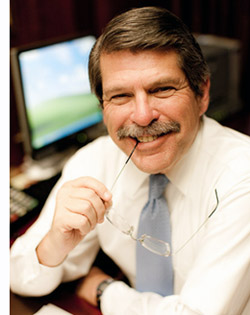 This Thursday marks a turning point in the decades-long effort to bring mass rapid transit to the Westside of Los Angeles. That’s when I, along with my colleagues on the Exposition Metro Line Construction Authority Board, will cast a crucial vote on extending the Expo Line from Culver City to Santa Monica.
This Thursday marks a turning point in the decades-long effort to bring mass rapid transit to the Westside of Los Angeles. That’s when I, along with my colleagues on the Exposition Metro Line Construction Authority Board, will cast a crucial vote on extending the Expo Line from Culver City to Santa Monica.
I intend to vote yes, and here’s why.
The Westside has waited for decades to become part of the growing regional mass transit system of Los Angeles County. While transit lines have been built in downtown, Pasadena, Long Beach, the San Fernando Valley and along the Century Freeway, the Westside’s public transit system is exclusively made up of street buses. The Expo Line will give commuters who work and live in the western part of L.A. County an alternative to sitting in their cars for up to 3 to 4 hours each day getting to and from work or school. For the first time since the legendary Red Car system was dismantled after World War II, the Westside will have mass rapid transit.
And Thursday’s vote is a key step to getting us there.
The Expo Board will consider the Final Environmental Impact Report (FEIR) for Phase 2 of the project, the section of the light rail that will run from Culver City to Santa Monica. We must approve the FEIR before we can award a design and construction contract for this long-awaited project. If approved, Phase 2 could begin some construction before the end of this year, with completion planned in 2015. The line’s ridership is estimated to be 64,000 a day by 2030.
The Expo Line in its entirety will connect downtown Los Angeles with Exposition Park/USC, Crenshaw, Culver City, Pico/Sepulveda, West Los Angeles and Santa Monica. The first phase, which runs between downtown and Culver City, is now under construction and working toward an opening next year.
The Expo Line has had its share of critics, with concerns raised about matters ranging from grade crossings, impact on neighborhoods and placement of the project’s maintenance yard to delays and noise during Phase 1 construction.
But I firmly believe that the FEIR has addressed these issues in great detail and that we can deliver a project that will reflect what our region wants and needs. Extensive analysis has been done to ensure that the Expo Line is built in a manner that is as respectful as possible of the communities through which it will run. New elevated grade separations have been recommended where appropriate. Those intersections include: Venice Boulevard, Bundy, Centinela, Pico-Gateway, Cloverfield/Olympic and Sawtelle. The remainder of the grade crossings will be at street level.
It’s significant to note that the overwhelming majority of the 9,000 comments received on the environmental impact report have been positive. State Senator Fran Pavley and Assembly members Mike Feuer and Julia Brownley also have voiced their support for the project. And the cities of Los Angeles, Culver City and Santa Monica have partnered with Expo to build it.
The $1.5 billion Expo Line is being funded largely through the Measure R half-cent sales tax that was approved by county voters in 2008. The project, coupled with the extension of the subway westward, also partially funded through Measure R, will bring much-needed mass rapid transit to the Westside.
All of us have waited a long time for this moment. Building the Expo Line and extending the subway to the Westside are among the reasons I helped write Measure R and fought so hard to get it passed. An effective rapid transit system will improve our quality of life. System users will save time and money while reducing wear and tear on body and soul.
Come and join us at the Hall of Administration at 2 p.m. Thursday, and let’s get this train moving.
Posted 4-19-10
Click here to read more blog entries.
Giving new meaning to pet projects in government
November 3, 2009
The leggy young thing seemed a bit nervous, even though she looked great—impeccably groomed, hot pink bandana around her neck. She was accompanied by a couple of handlers to stage-manage every step of her debut performance.
She shook ever so slightly as she waited for a photographer in the VIP parking lot. Eventually, she managed to nibble a few greens, and then—paging TMZ!—she urinated! In public! Right there on the grass!
“It’s always a new adventure,” says Evelina Villa, Los Angeles County’s puppy wrangler, as she scooped up young Madeline, the eight-week-old shepherd mix, who was the day’s star attraction, and headed into the Hall of Administration.Ordinarily, Villa, 24, tends to administrative responsibilities in the Long Beach headquarters of the Department of Animal Care & Control. But most Tuesdays, she goes to The Show—the Board of Supervisors meeting. There, she hands off the animal to Supervisor Michael D. Antonovich, who says a few words to coax would-be adopters attending the meeting or watching the next night on cable TV. ![]()
But before the big show-and-tell moment, Villa presides over a behind-the-scenes ritual that has become part of the culture of board meeting days, a folksy tradition that seems more Mayberry than metropolis. In all, nearly 650 pets have found homes—hundreds with county employees—since the program was started by Antonovich in 1995.
In fact, Villa starts the search on behalf of each animal at the very top, making the rounds of each supervisor’s 8th floor office. The No. 1 priority is finding a home for a needy pet, whether it’s with a soft-touch chief deputy or John Q. Dog Lover.
So just before 9 a.m. on a recent Tuesday, there was Madeline on the red carpet in Antonovich’s office, where the “shepherd mix’” part of her lineage was being debated. “Looks like a Jack Russell,” someone says, sizing up Madeline’s tan and cream markings—patches over both eyes, white strip down the nose.
As Villa moved among the board offices, sporting her “Travelin’ Tails” tote bag, she kept her spiel going: “Anyone interested in adopting a little puppy today? This is Madeline. She needs a home.”
In Supervisor Gloria Molina’s office, staff assistant Carlos Huezo looked like a soft touch—he’s already gotten one puppy from Villa, a German shepherd-boxer mix named Cougar. But on this day, he passed. “Maybe next time,” he says, adding: “We’ve all adopted here.”
Then it was off to the office of Supervisor Zev Yaroslavsky, where staffers have adopted a number of pets over the years, including Row-Z, a shepherd mix who now lives with chief deputy Alisa Katz.
“What do we have here? Ooh, she’s precious,” coos Regina Marquez, a longtime Third District caseworker who last year adopted Rex, a pug-Pekinese mix.
Next stop: the seventh floor offices of Chief Executive Officer William Fujioka, who bent down and attempted some dog-speak: “Maddy, Maddy, Maddy….Hey, baby….Good girl….”
Somebody offered a Pup-A-Roni snack strip. Then they were off to the 3rd floor, where, at 10:03 a.m., Villa made the handoff to Antonovich. Madeline’s moment in the limelight had begun. And, just as quickly, ended.
“So that was it, 10:05,” Villa said. Villa, who majored in business and theater at Whittier College, finds that her current job requires a bit of both: she handles all the finery of dog presentation—bandanas, collars, tiny T-shirts—and also keeps a spreadsheet on where each animal ends up. So she knows at a glance that a lab mix named Cody, for example, went home with a “relative of BOS.”
She administers a 19-point questionnaire (“Do you have a fenced yard?” “How many hours of the day will this pet spend alone without any supervision?”) to would-be adopters. If there are multiple applicants, Villa stages a drawing, with a co-worker picking the winner. New owners pay adoption fees and spay/neuter charges that range from $30 to $100, depending on the type of pet and the length of time the animal has been in the shelter.
So far, Villa has resisted the temptation to nab one of the prospective adoptees for herself, although she once had a close call with a Shi-Tzu mix named Lady.
On this day, she was accompanied by Daelene Jimenez, an animal control officer from the Baldwin Park shelter, who was learning the ropes. (In addition to showing off the animals, the department wants to showcase the range of occupations it offers at its six shelters, and sometimes sends animal control officers and animal care attendants to the board meetings to present the pets Villa has selected and named.)
For Jimenez, this meant an early wake-up call and responsibility for another crucial part of the Tuesday ritual—giving Madeline a bath. Jimenez also got a crash course in the tricks of the trade, meant to avoid any dogs-gone-wild moments involving elected officials. Rule No. 1: Always start the day with a potty break on the Temple Street lawn.
Soon, some older animals will be getting their star turns, as well.
“The puppies we have no problem adopting; we’re hoping to give exposure to some of the beautiful older pets,” says Villa’s boss, Michelle Roaché, deputy director of the department’s Outreach and Special Enforcement Division. (Cats are sometimes featured, too, but don’t ask Villa to wrangle them. She’s allergic.)
It is a point of pride that “100% of the animals featured, including dogs, cats, rabbits, birds, and a guinea pig have been placed in new homes,” says Antonovich spokesman Tony Bell.
As for Madeline, no county employees stepped up to adopt her during Villa’s rounds. “Usually, if we do have takers, I would know by now,” Villa says before heading back to her office. So if no one from the public steps up either, then Madeline would head to a rescue organization, which would continue the hunt. “Our goal is to get the dogs out of the shelter,” Villa says, “It’ll end up good for her.”
In the 12 months ending July 1, 25,246 of the 45,356 dogs impounded into county shelters found homes—nearly 56%. Those who’d like to adopt can check out the department’s website.
H1N1 vs. “The Invincibles”
November 2, 2009
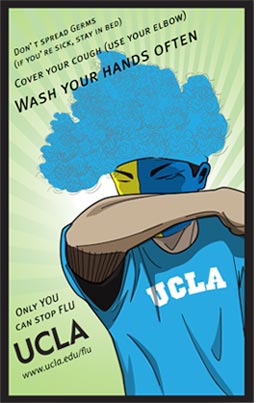 It’s safe to say that thermometers are not a typical part of dorm welcome kits for incoming UCLA students.
It’s safe to say that thermometers are not a typical part of dorm welcome kits for incoming UCLA students.
But they are this year. It’s just one way that H1N1, known on the street as the swine flu, is changing the flu season conversation for a whole generation of young adults not used to being in the “high priority” hotseat.
In short: This ain’t your grandma’s flu.
Emily Bossak, a 22-year-old UNLV graduate who recently moved here and plans to attend UCLA law school, wouldn’t ordinarily get a flu shot but decided to get vaccinated recently at Los Angeles County’s first H1N1 immunization clinic in Encino.
“Usually when I think seasonal flu, I think people 50 and over,” Bossak says.
Senior citizens, who ordinarily turn out in the biggest numbers for seasonal flu shots, don’t even make the priority list for H1N1—unless they fall into one of the other risk groups. (In addition to young people from ages 6 months to 24 years, those groups are: pregnant women; those caring for infants younger than 6 months; health care and emergency workers, and people from ages 24 to 64 years with health conditions that put them at higher risk for flu-related complications.)
Medical officials believe that older people may have picked up some immunity from exposure to a similar flu strain in the 1950s. In any case, those most likely to be hospitalized this time around are in their teens.
“I actually read that book ‘The Great Influenza,’” Bossak says, noting that she was struck by the magnitude of the 1918 pandemic—“especially with all the deaths in my age group.” She adds that her father, a doctor, recently told her that one of his colleague’s daughters had died of the disease.
Does this kind of heightened awareness mean that all her friends are lining up to get vaccinated, too? Not so much. “They’re more afraid of the symptoms of the shot,” Bossak says.
To encourage awareness, dispel myths, promote good flu season hygiene and put out fast-breaking news about H1N1—particularly about nationwide vaccine shortages—Los Angeles County public health officials are using youth-friendly channels such as Twitter and YouTube to spread the word, along with the department’s website.
In addition, Dr. Alonzo Plough, the department’s director of emergency preparedness, recently provided a briefing for college newspapers.
Young adults—sometimes described as “the invincibles” for their it-can’t-happen-to-me outlook—are an important group to reach, health officials say. “That’s the age where we all believe we’re invulnerable,” Plough says. Not only do they often live with roommates—“How quickly this can spread in a dormitory population!”—but this age group also has a “tendency to be uninsured.”
For people who cannot get immunized through a private provider (or in the case of students, through a university health service), the county is hosting a series of free H1N1 vaccination clinics, at locations including Hollywood Park and the Pomona Fairplex, as well as at recreation centers and a number of college campuses, including two at the USC-Lyons Center and Santa Monica College. (The complete list is here.) Because of vaccine shortages, however, officials for now are asking those who do not fall into priority groups to wait until expected shipments arrive in coming weeks.
At the county’s first vaccine clinic in Encino, Dr. Jonathan Fielding, the county’s director of public health, received the first shot. Part of the healthcare worker priority group, he suited up in his white doctor’s coat and administered the vaccine to Los Angeles County Supervisor Zev Yaroslavsky. His priority group: adults with underlying medical conditions, in his case, diabetes.
“When was the last time you gave a shot?” Yaroslavsky joshed as he rolled up his sleeve, smiling and later telling reporters, “Jonathan Fielding actually administered the shot and I didn’t even cry. It was a wonderful experience.”
After that came Jaxon Irribarra, 13 months, and his 24-year-old mother, Jessica Gonzalez.
“This is the first time I’ve gotten one,” Gonzalez says. “We both fall in the high risk groups, and I thought it’s better to be safe than sorry.”
Yaroslavsky calls the rollout “the largest mobilization of public health since the polio epidemic of the mid-1950s” and called on the public, particularly those in priority groups, to get their shots, too:
“By receiving the H1N1 vaccine, you not only protect yourself, but you protect your loved ones as well. You also protect your co-workers, students, children in schools as well as the rest of the community.”
Looking out for oneself—and for others—has been a big part of the message at UCLA, where university officials have created a self-screening questionnaire for students, developed a Create Your Flu Pack guide (“Be a Bruin Flu Fighter!”) and are offering an online “H1N1 Influenza Vaccine Wait List” to help organize administering the still-scarce vaccine.
It’s a message that’s hard to miss on campus.
“There’s posters, there’s banners, there’s hand sanitizer dispensers,” says James Gibson, director of UCLA’s Department of Environment, Health & Safety. “At our (seasonal) flu clinics, we’ve vaccinated many more people than we have in the past. It’s a much bigger issue that it has been in the past.”
Some 1,200 students have come down with influenza-like illnesses over the past four weeks, according to Susan Quillan, chief of Clinical Services at UCLA’s Arthur Ashe Health and Wellness Center, but only 250 have gone to the Ashe Center for treatment.
That’s an indication that students are following advice to “self-isolate” when they come down with flu-like symptoms, and that roommates and friends are pitching in to care for those who fall ill.
“The majority of the people in the dorms are responding to the education,” Quillan says.
Andrew Hattala, 24, a resident assistant at UCLA’s Hedrick Hall, said the dorm had quarantining rooms available and noted that housekeeping was doing extra sanitizing when requested. And he noted that washing your hands and “coughing into your elbow” were suddenly statements of personal responsibility.
“You see how important the things are that you learned in elementary school.”




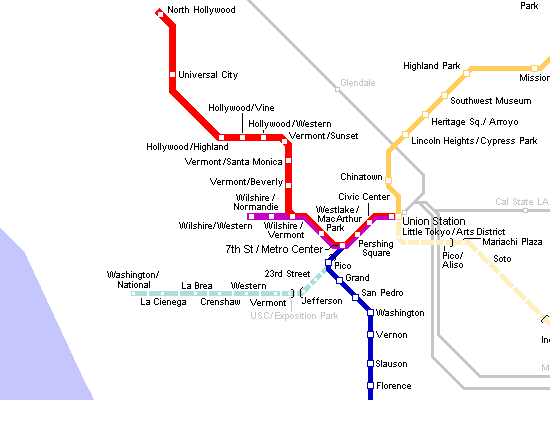
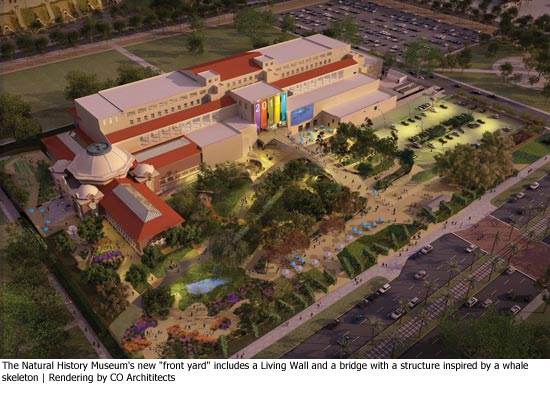
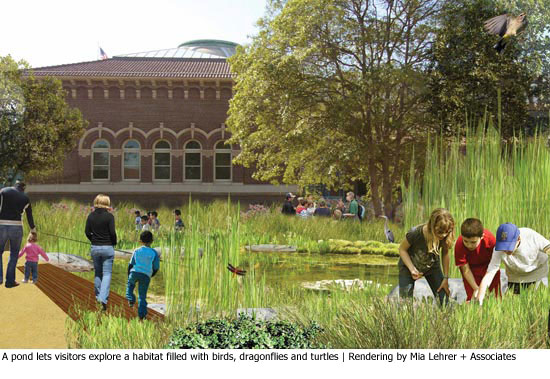
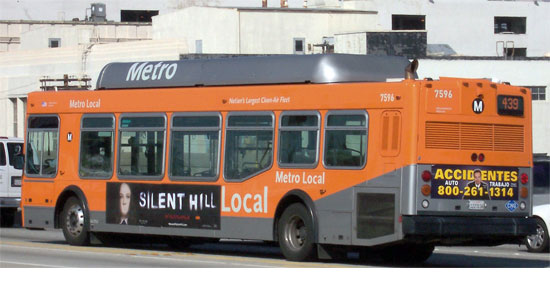
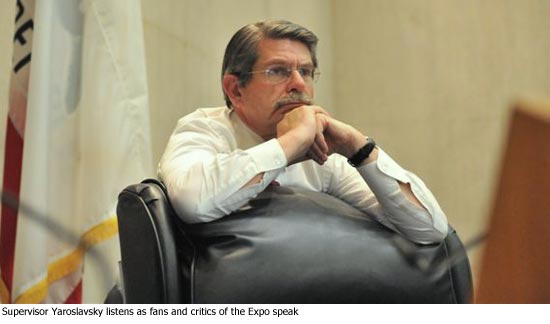
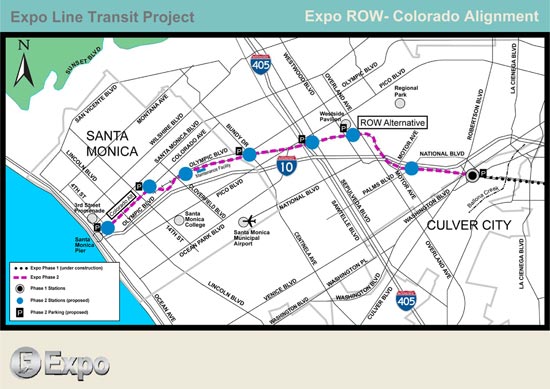


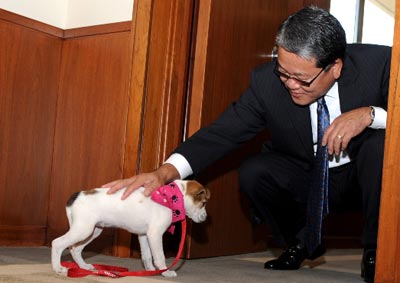






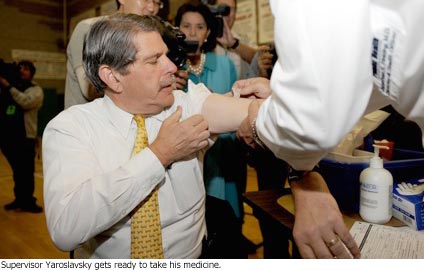







 405 bridge work causes a stink
405 bridge work causes a stink

